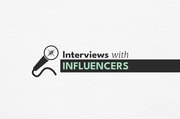Interview Published September 26, 2018 · 9 minute read
Interviews with Influencers: Dr. Walter Kimbrough
Wesley Whistle

While being good at Twitter is a major skill for any college president, the dedication to serve marginalized and disadvantaged students tops the charts for leaders in higher education. As someone who studied college presidents for my capstone research in graduate school, it was an honor to meet and interview the legendary @HipHopPrez—more formally known as Dr. Walter Kimbrough.
Q: If you could craft a single tweet (240 characters max) asking for one change in federal higher education policy, what would the tweet say? Why?
A: I’d probably need time to craft it, but the essence would be that policy has to change so we support education as a public good. For the last 50 years, education has been seen as a private good and that hurts low-income people and students of color. We’ve got to flip that model.
Q: You became a VP of student affairs at 32 and a college president at the age of 37. That’s pretty incredible. Were you driven to be a president? How did that happen?
A: Well, there have been a number people to be young presidents. I actually wanted to be a veterinarian growing up. I went to the University of Georgia because it has one of the best vet schools in the country. I got into vet school early and realized I actually didn’t like veterinary medicine. I was very involved on campus and had a chance to talk to my college president and realized that was what I wanted to do. He steered me into doing a master’s degree in college student personnel.
For the last 50 years, education has been seen as a private good and that hurts low-income people and students of color. We’ve got to flip that model.
At 23, I was taking a career prep class and I laid out a 15 year plan to become a college president. That would put me in the presidency at the age of 38. The average age at the time was 58. That would’ve been insane but I did it a year earlier. So when I decided I wanted to be a college president, I really worked toward that goal knowing coming from student affairs was not a traditional path. I knew I needed to write for publication, sit on an editorial board for a refereed journal, and I wanted to write a scholarly book. I taught classes and completed all of the faculty credentials, so understanding faculty issues would never be an issue for me. As Director of Student Activities at Old Dominion University, I was co-chair of the annual fund for faculty and staff so I acquired some development experience. When I became a Chief Student Affairs officer, I worked with everything—athletics, academic affairs, and more. I had my area that I knew really well but I had dabbled enough in other things to be a good candidate.
Q: The most recent American Council on Education American College President Study showed the average age was 63, and 37 is quite a bit younger than that. What do you think is the importance of next generation leadership?
A: I was thinking about this the other day. I’m reading this book called Relentless by Tim Grover, a former trainer for Michael Jordan and thinking about this idea of relentless excellence. He talks about how historically in organizations we talk about the closers—the people that come in and close the deal. But he talks about people being the cleaners, representing another level of competition, where they set the stage and don’t worry about the competition. There are parts of that notion I relate to, and I thought about becoming a president when I did, because it was at the beginning of the social media era. I became a president the same time Facebook started. For me, I had a unique opportunity to define how a college president could use social media. So that’s what I’ve done. In this space, I’ve tried to show people you can use these platforms to better engage not only your students but people all across the world with the work you’re doing. I think that has a lot of value.
I think a new generation coming in and finding new ways to reinvent things is important. Studying college presidents, particularly liberal arts presidents, even in the 1800s and early 1900s, you see they were engaged with their students. I’m doing the same thing, I’m just using technology to do it. I think there’s going to be a need for a new generation to come along and reinvent another aspect of higher education and in this era I’ve played a major role in showing how that is done.
Q: You’ve been vocal about your support for Pell Grants and their opportunity to provide upward mobility for low-income students across the country. What advice would you give other college presidents for how to serve those highest-need students?
A: There’s a need around intrusive advising. You have to do that and engage both students and families. There was a student I was trying to recruit out of Atlanta. I was just at a United Methodist church and it was youth Sunday. A student who was a great speaker was talking about how her family was homeless and she was bouncing around from one place to another. So I told her, “If you get admitted to Dillard, I’m going to cover the cost.” She texted me and told me she was unable to get admitted. I couldn’t figure out what was going on. She’s articulate and impressive but I learned her GPA and ACT score and it just didn’t add up. So I recommended she complete one year at a community college and then transfer in, and she would still get the same deal. It was important I made sure she was properly adjusted and prepared for the transition to college. Her mom called to let me know her daughter decided to take the last year of school off because she had anxiety about leaving her mom and brother. She grew up without a place to live and now would be several states away and was worried about her mom being okay so she took a year to not deal with that.
For me, I had a unique opportunity to define how a college president could use social media. So that’s what I’ve done. In this space, I’ve tried to show people you can use these platforms to better engage not only your students but people all across the world with the work you’re doing. I think that has a lot of value. I think a new generation coming in and finding new ways to reinvent things is important.
You look at the numbers and it’s easy to say “the kid messed up” but you have to go beyond that sometimes. The scores didn’t add up. Listen to her and you’ll think there’s no way her scores could be that bad, but after talking to her mom I got it. Those are the things I think sometimes people see when they see a Pell student. They don’t anticipate all of the other things the student is dealing with in their life in addition to school, and they likely can’t comprehend what it feels like to manage those things because it wasn’t their experience. Getting them to understand is the challenge.
The average college president doesn’t have the time to have those conversations, but I made it a priority. I talked to the girl and her mom to figure these things out. Dillard is 75% Pell, which means I have lots of stories like this and try my best to figure out how to support these students. Presidents have to figure out how to meet the needs of all students on their campuses and understand them. This is especially true on big campuses where everyone needs to understand those students and what they need. So you have to buy into this population you are serving and their needs, especially when you have a large population of these students.
Q: Who are your influencers in education, and why?
A5: Well one is Dr. Martin Luther King, Jr. Another is the former president at Albany State University, Portia Shields. When I became the VP of Student Affairs there, she told me if I came to work for her, I’d be a president in five years, and I was one in four. We have an interesting relationship. She thought she was my mother so it was worse—in a good way—giving me advice on many different areas and she gave me a broad perspective of higher education.
You look at the numbers and it’s easy to say “the kid messed up” but you have to go beyond that sometimes.
I also talk a lot about Benjamin Mays who was president of Morehouse College in Atlanta for 27 years. He actually became the chair of the Atlanta Public School Board when I was in grade school through high school. In terms of studying how he was a president, he was the president at Morehouse while MLK was a student. He became a mentor to someone who became one of the most notable citizens in the world. MLK would go to his house for dinner. He showed how powerful the mentoring relationship could be, and I realized I could do something similar, in a different form today.
Q: What’s the story behind your Twitter handle @HipHopPrez?
A: When I arrived at Philander Smith College as president I had to do the introduction thing. I was 37 and the average age of presidents was 58. I’m not from the great generation of veterans, I’m not a baby boomer, I’m from Generation X. I’m from the hip hop generation and I have to be authentic to that, so I’m going to approach this job with those sensibilities and I’m not going to be like other people. The Arkansas Times actually called me the “hip hop president” and the media person at the college didn’t think that would be a good association for me to have. I thought it was brilliant and I ran with it. Now it’s my brand. Having a president with a brand is important—though my wife hates it. It’s useful because it stands out and is different.
Presidents have to figure out how to meet the needs of all students on their campuses and understand them. This is especially true on big campuses where everyone needs to understand those students and what they need.

